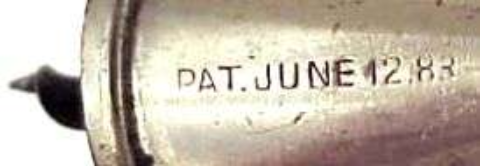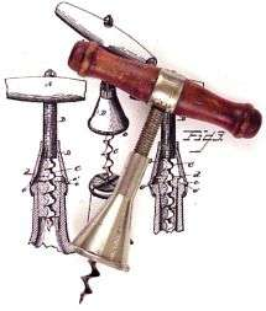187
Getting Strait
In Troy, New York Thomas Strait set out to accomplish two things in his
corkscrew design - to make a simple,
inexpensive cork extractor combined
with a wire or cord cutter. He designed
a conical bell with internal threads to
ride on a threaded shank. He described
his wire cutter as a
―
peculiar
construction.
‖
Strait tapered the inner surface of the
cone to form his cutter. In use, the
cutter encircles the bottle neck and as
he says
―
the rim forms an inner-cutting
edge to break the sealing wax and sever
the wire.
‖
In use, he inserts the worm
into the cork and as he screws it in, the
sealing wax is broken and the retaining
wire is cut and continuing to turn the handle will extract the cork. Strait
contended that using other corkscrews requires the wire to be cut first then the
worm inserted into the cork
―
necessitating considerable loss of time.
‖
Obviously,
Strait was a very busy man who wanted to waste no time uncorking his bottles.
Strait boasted that his invention
―
is simple, durable, and inexpensive, and works
with admirable efficiency, besides possessing other advantages too numerous to
mention.
‖
On June 12, 1883, Strait was assigned United States Patent Number 279,203.
The patent date mark can be found on the side of the cone.

